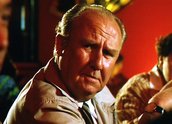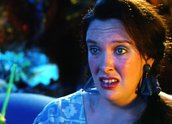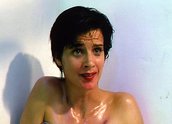


Muriel’s Wedding (1994)
Synopsis
Muriel Heslop (Toni Collette) is the eldest daughter of a family of underachievers. Her father Bill (Bill Hunter) is a corrupt town councillor in the northern NSW town of Porpoise Spit; her mother Betty (Jeanie Drynan) looks perpetually stunned. Her brothers and sisters are lazy, overweight television addicts. Muriel’s only solace is the music of Abba, and her dream of one day having a beautiful wedding, something that her alleged 'girlfriends’ tell her she’ll never have. Muriel’s life changes when she runs into Rhonda Epinstalk (Rachel Griffiths), a former school friend. They run away to Sydney to discover a wider world (after Muriel has stolen $12,000 from her father), but fate keeps threatening to drag them back to Porpoise Spit. When a serious disease threatens Rhonda’s independence, they make a promise to stick together and never go back.
Curator’s notes
Muriel’s Wedding took Australia by storm when it opened in 1994. Not only did it introduce two new actors of genuinely stark talent (Toni Collette and Rachel Griffiths), both of whom would become international stars, it satirised an Australian family in a way that audiences found extremely moving, as well as hilarious.
Writer-director PJ Hogan’s depiction of a battler family from a forgettable north coast backwater is relentlessly bleak, but also immensely sympathetic (with more than a passing resemblance to Jane Austen’s Persuasion). Hogan doesn’t create an ironic distance, from which an audience may look down; he keeps us closely identified with his characters so that we see ourselves.
Most of this identification is through Muriel, but not all – Hogan is careful to give us a sense of desolation and disappointment that befuddles all members of the Heslop family, from the father down. Bill Hunter’s blustering patriarch is one of Australian cinema’s most pungently awful characters. Although never actually evil, he has raised a tribe of children to believe they’re 'useless’, and that’s how they behave. Jeanie Drynan, as his wife, has become almost catatonic in her distraction – a portrait of a wasted life that is completely tragic. Critics have suggested a connection between the Heslops and the Rudd family from the silent movie On Our Selection (and various sequels), suggesting that Australian cinema tends toward 'a celebration of ugliness’. Muriel is certainly an ugly duckling, and it isn’t really clear by the end that she will become a swan. Rather, Paul J Hogan’s aim, as he has said, was to celebrate the ugly duckling for herself.
'Usually in Australian films, definitely in Australian television, definitely in American films, the central character is usually the Sophie Lee character. … Muriel in these stories is left out or consigned to a position of best friend, one to feel sorry for … I wanted to put that kind of character centre-stage and the beautiful best friend in the position of living horror’. Tom O’Regan, in Australian National Cinema (Routledge 1996), points out that this celebration of ugliness is common in Australian film, going as far back as the not-so-pretty protagonists in The Sentimental Bloke (1919), or the 'daggy’ charms of Bazza McKenzie (from the 1970s). It is arguably an expression of Australia’s outpost mentality, our distance from the metropolitan 'centres’ of culture and beauty (once London, more recently New York). This is sometimes interpreted as the 'cultural cringe’, but in Muriel’s Wedding it is a statement of evolution, an escape from what the architect Robyn Boyd called 'the great Australian ugliness’. That’s why the film has so many shots of cars and taxis driving away from the Heslop family home in Porpoise Spit. This is the Australia that once was, PJ Hogan seems to be saying, but no one has to live there any more. A film like The Castle makes a similar observation about the dagginess of Australian domesticity, but a different conclusion – you’d be mad to want to move!
- Overview
- Curator’s notes
- Video 3 clips

- Principal credits
- Find a copy
- Comments 1
- Map
- Add your review



